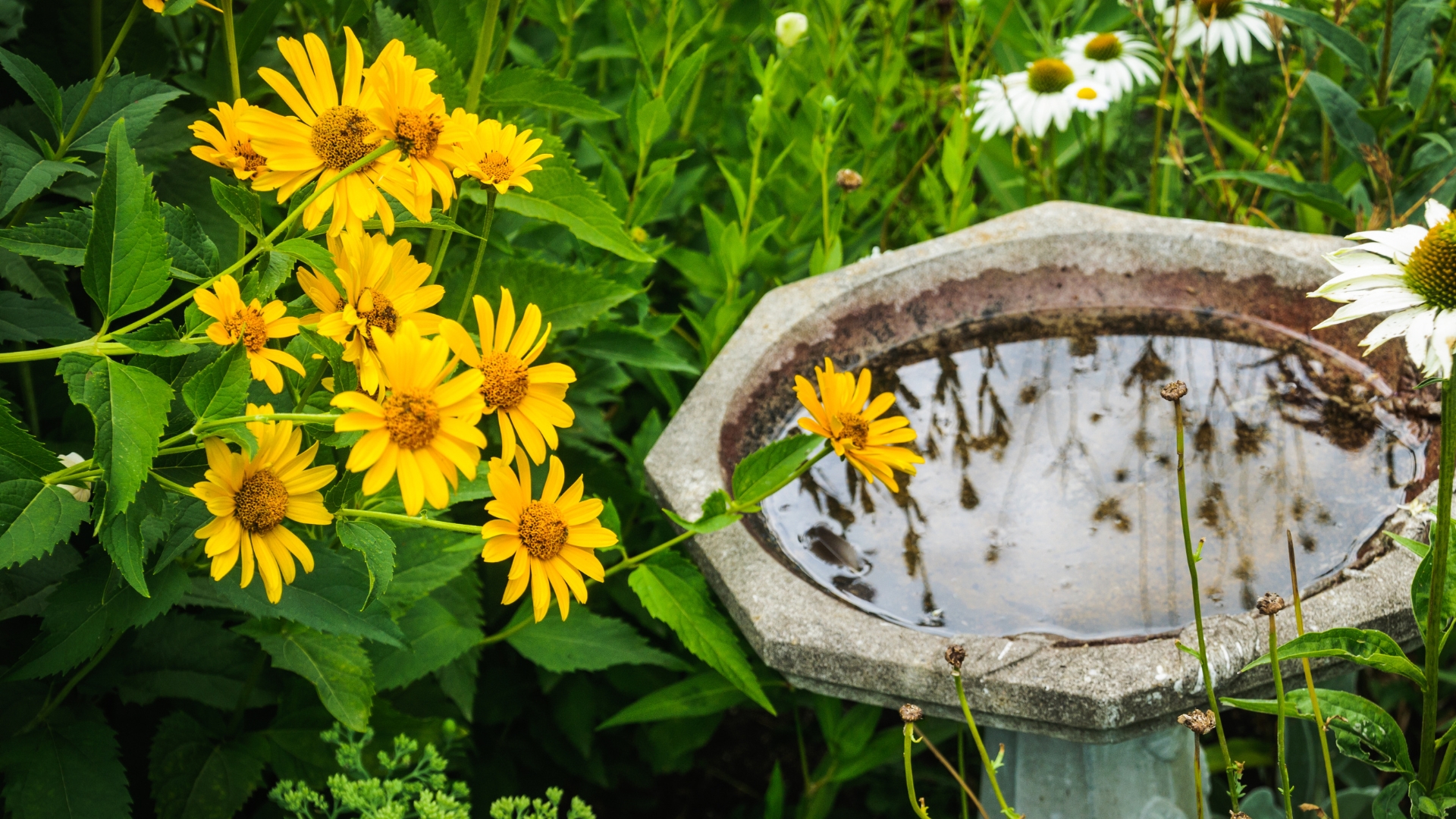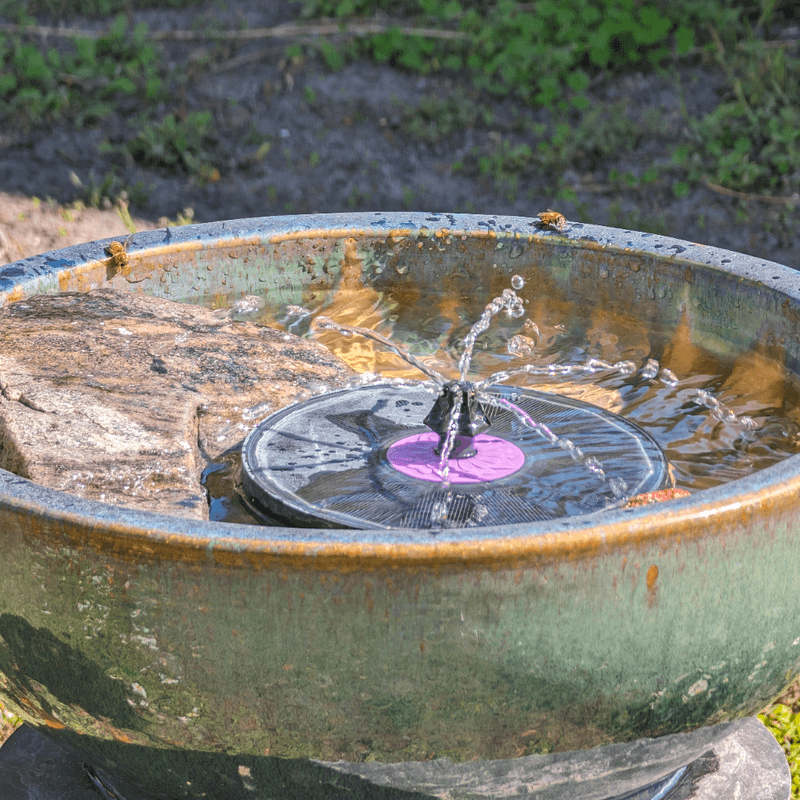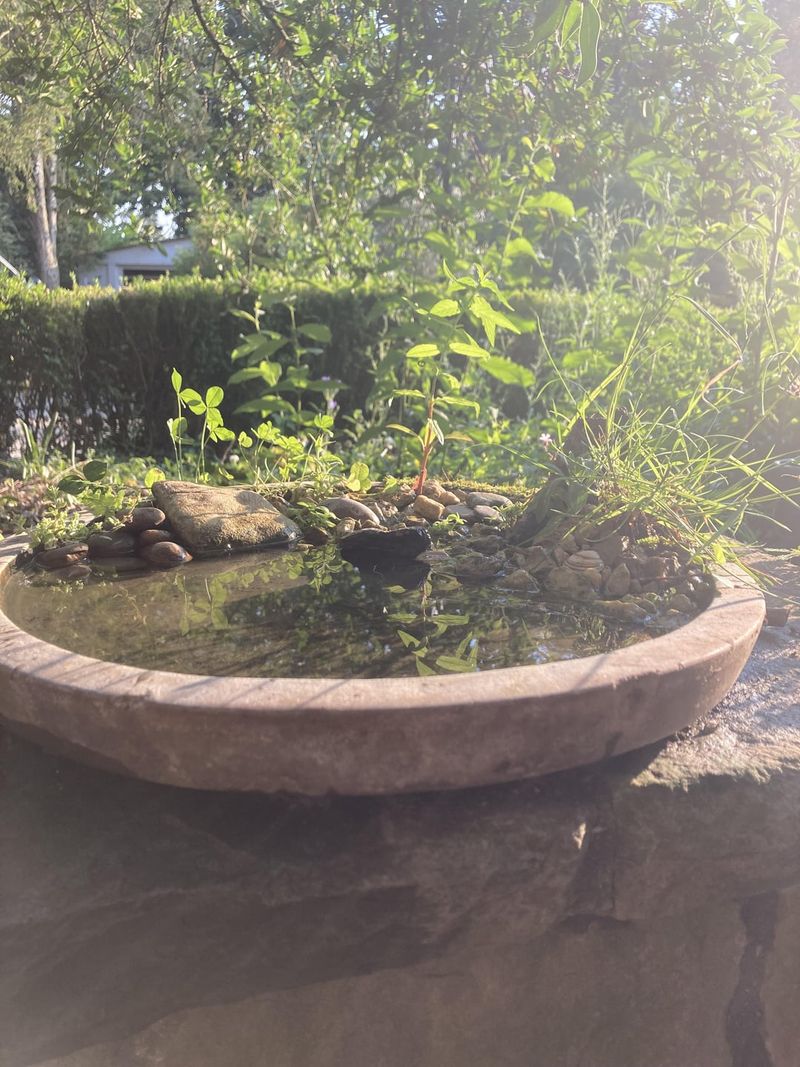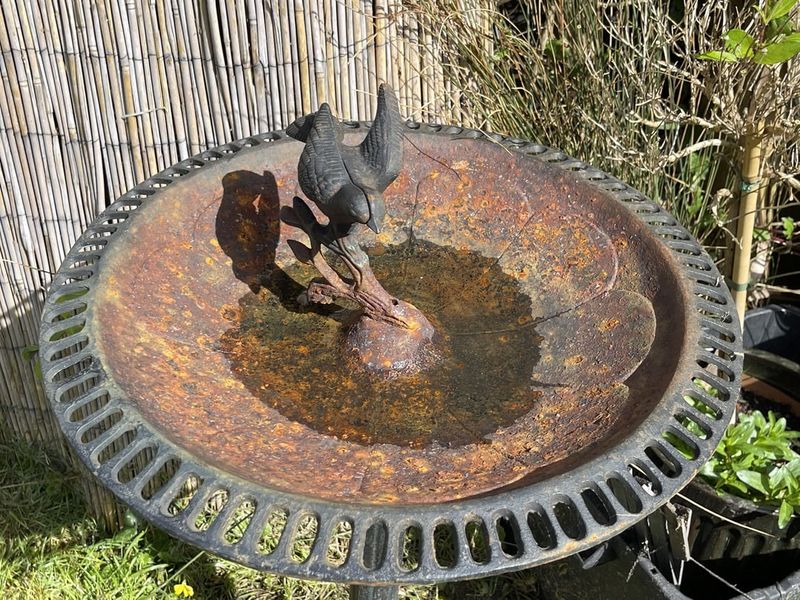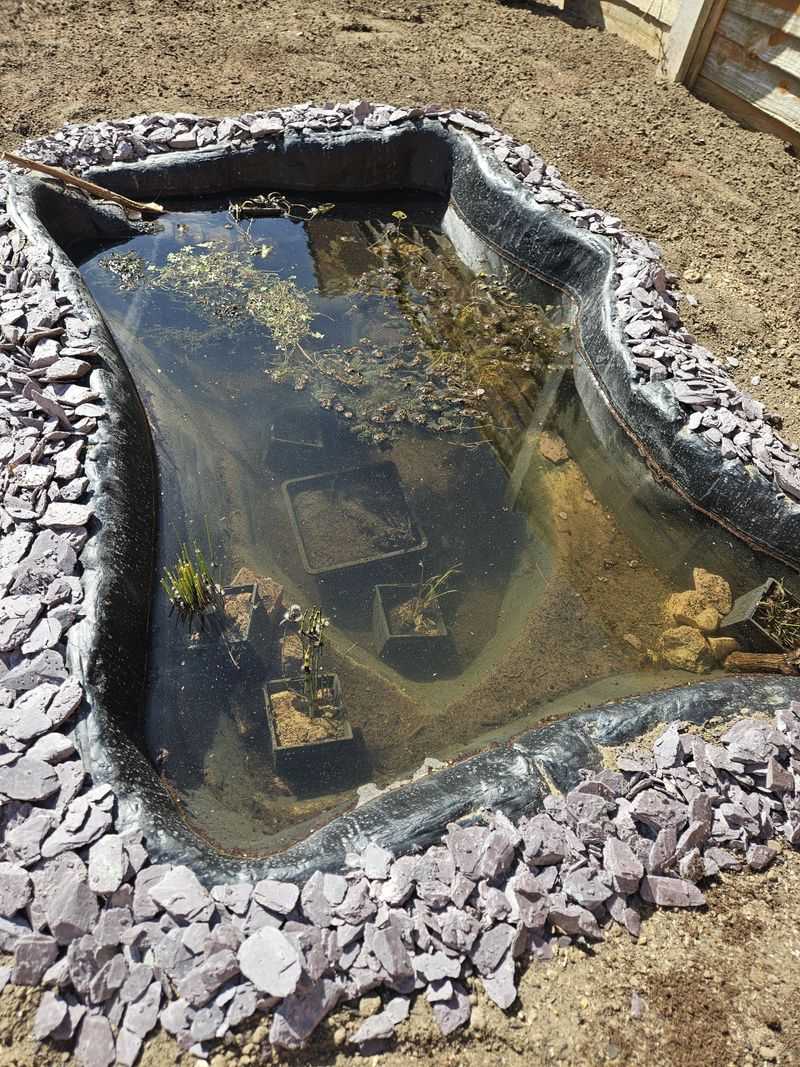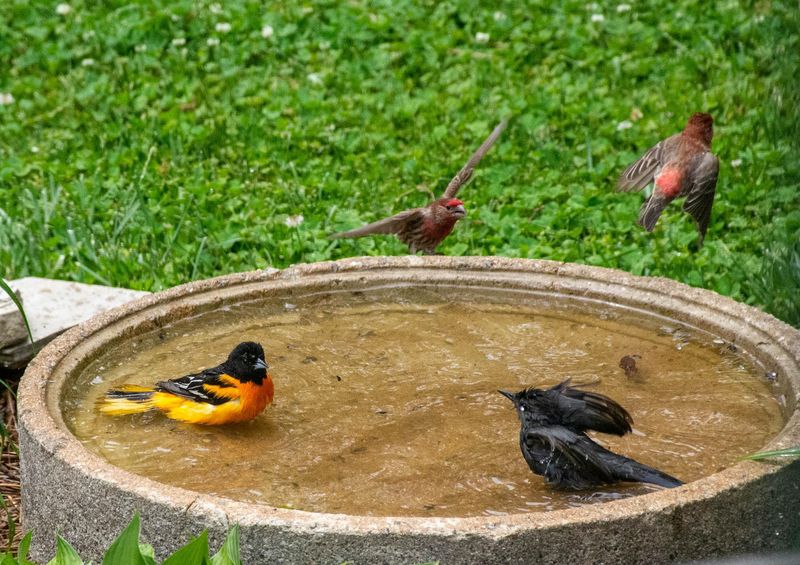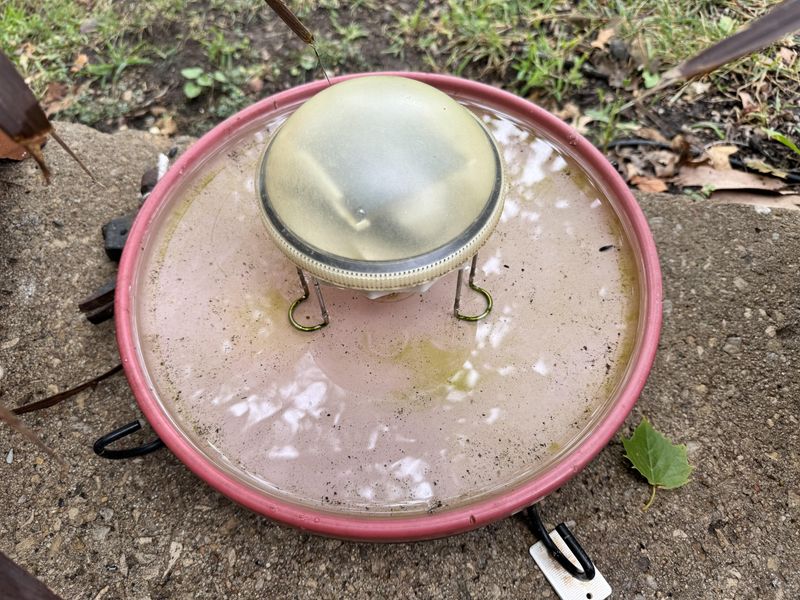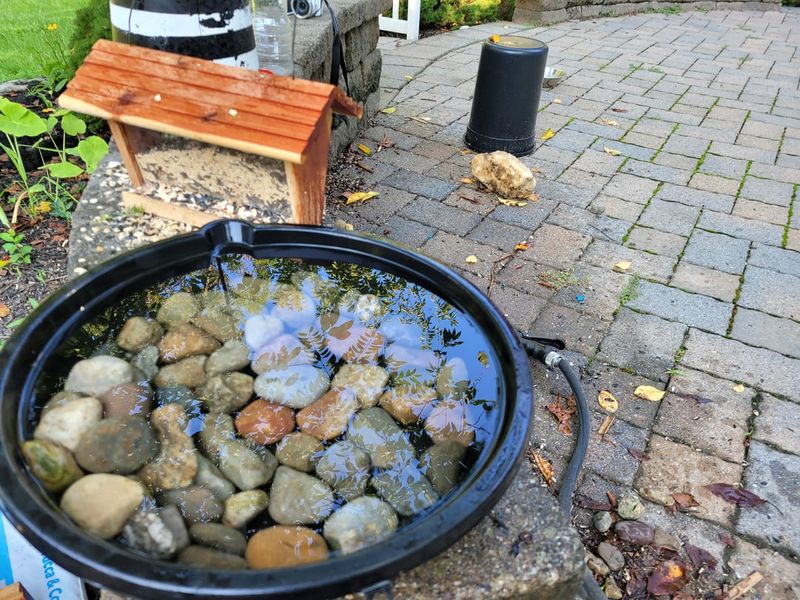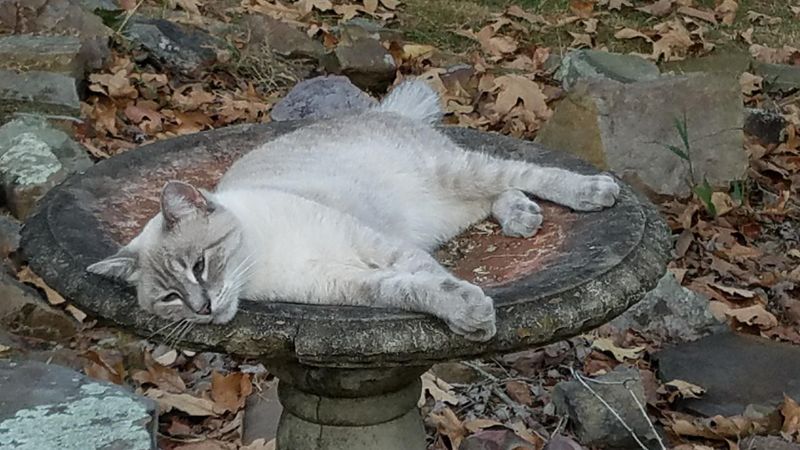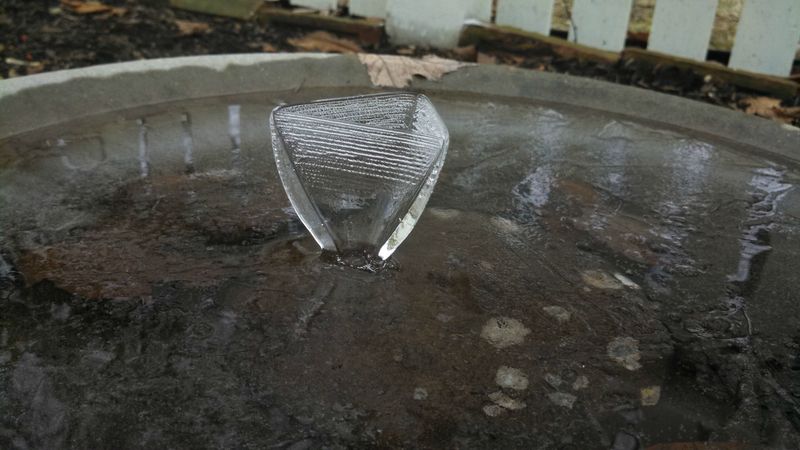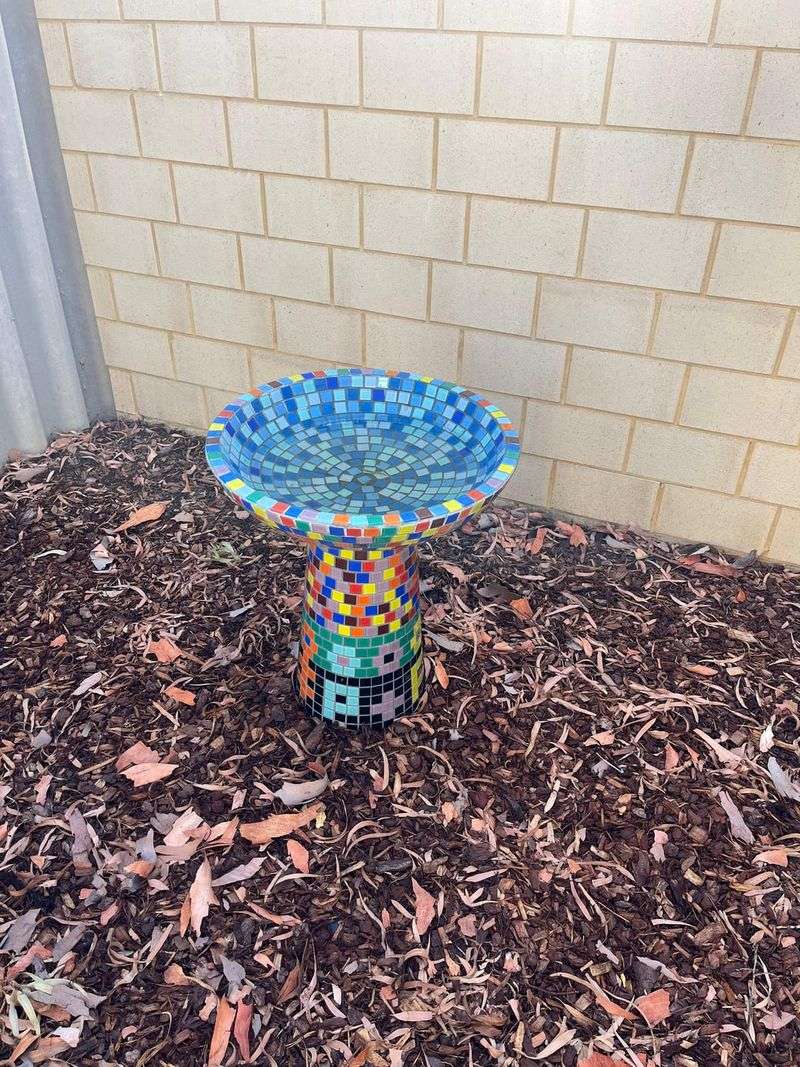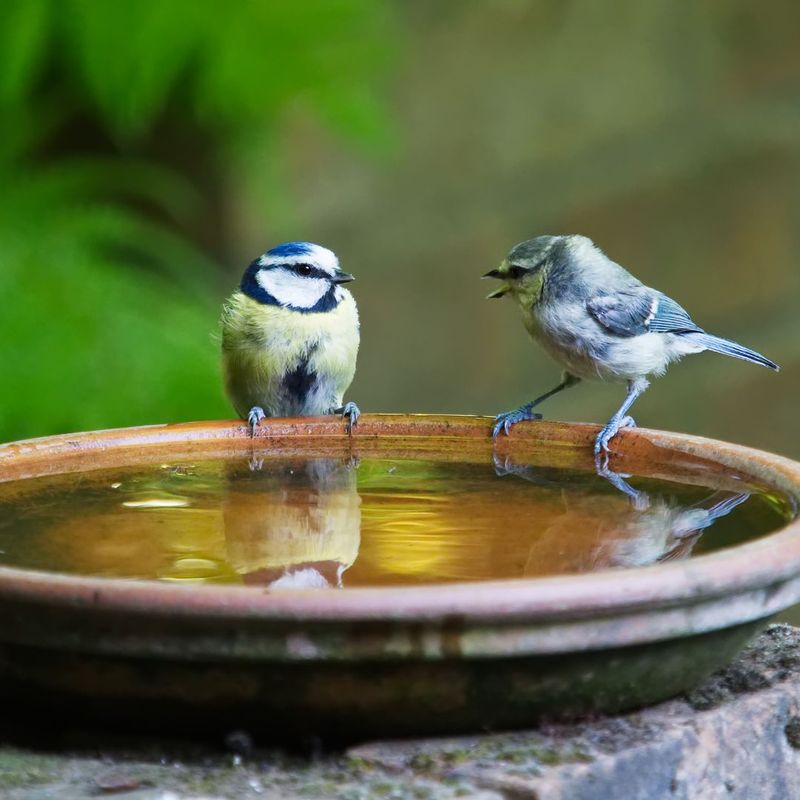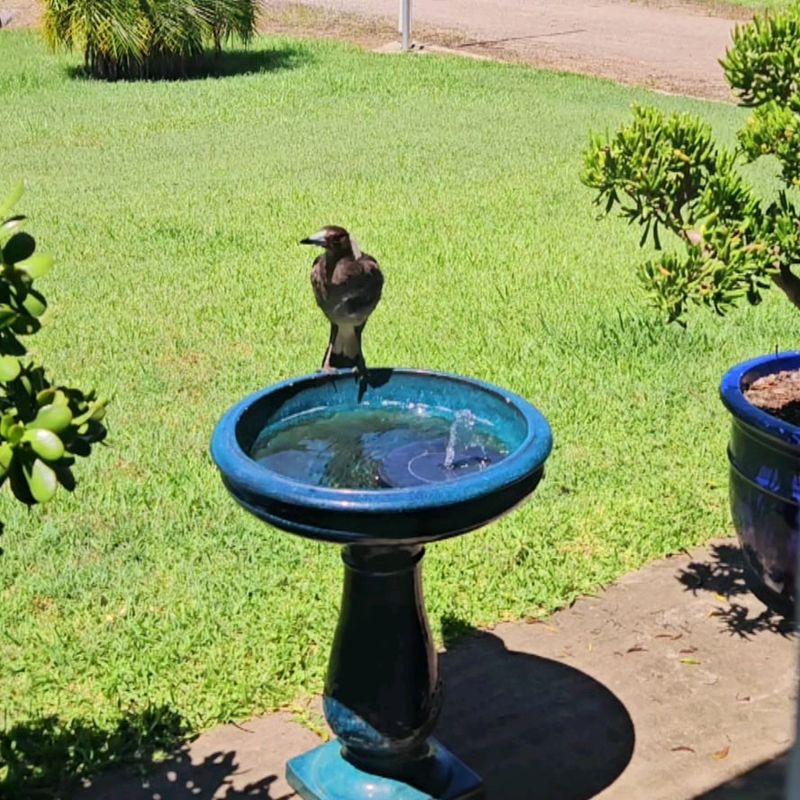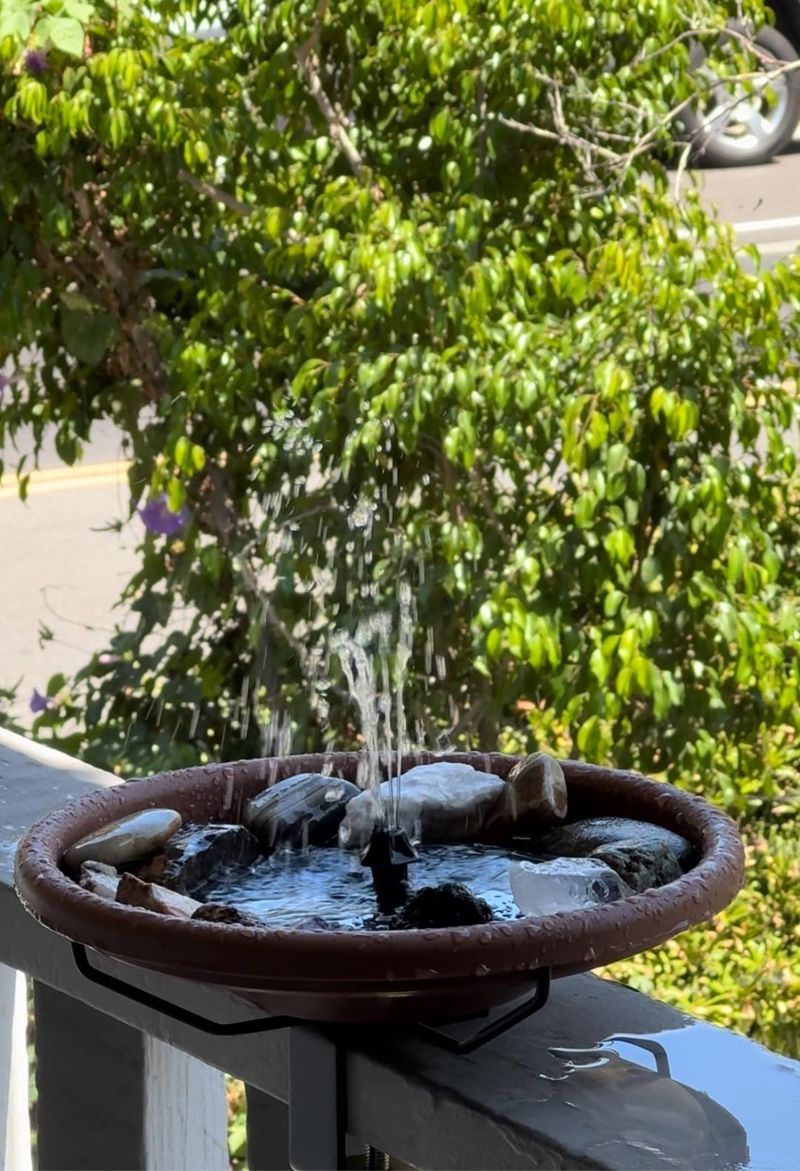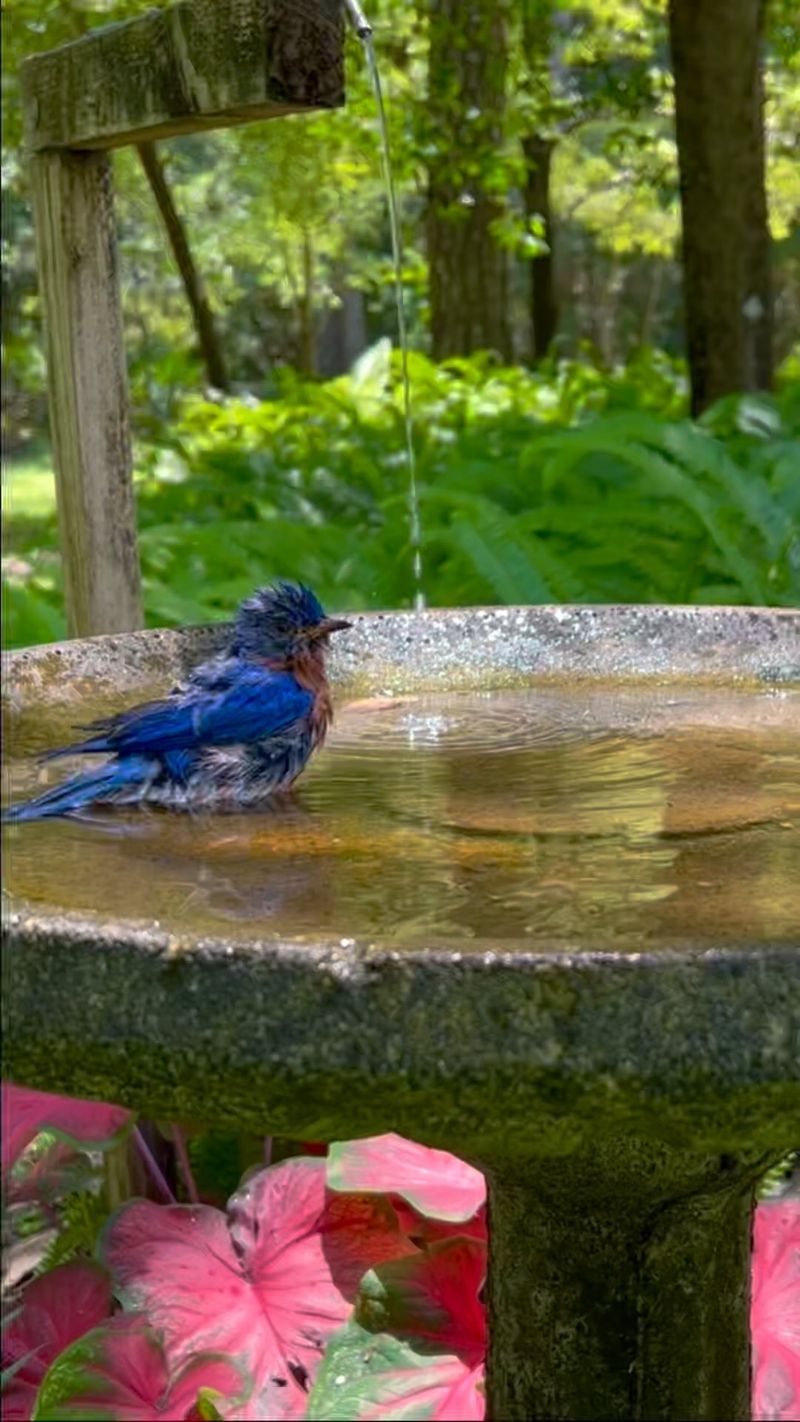I used to think adding rocks to my birdbath was doing the birds a favor—cute, natural, and helpful, right? Turns out, it was more trouble than it was worth.
What looked like a sweet little spa setup quickly turned into a slimy science experiment. From gunk buildup to mosquito drama, those innocent pebbles weren’t so innocent after all.
If you’re thinking about adding rocks, here are 15 reasons you might want to skip them and keep things easy for you and the birds.
1. Cleaning Becomes a Major Hassle
Scrubbing around rocks takes twice as long as cleaning a smooth-bottomed bath. When algae and bird droppings get trapped between stones, you’ll need to remove each rock individually to properly sanitize the bath.
Many bird enthusiasts find themselves skipping regular cleaning because it’s too time-consuming, which leads to unhealthy water conditions. Regular maintenance is crucial for bird health.
A rock-free bath can be quickly emptied, wiped down, and refilled in minutes rather than turning into a half-hour chore that you’ll be tempted to postpone.
2. Bacteria Love to Hide Between Stones
Rocks create countless tiny crevices where harmful bacteria multiply rapidly. Even with regular cleaning, those microscopic spaces harbor pathogens that can make birds sick.
Studies show that porous surfaces in water features can host up to 30 times more bacteria than smooth surfaces. Birds bathing in contaminated water may spread diseases throughout your local bird population.
A simple, rock-free bath can be fully sanitized, while stone-filled baths may remain contaminated despite your best cleaning efforts.
3. Water Evaporates Faster
Rocks absorb heat from sunlight and accelerate water evaporation. During summer months, a rock-filled bath might dry out completely in just hours, leaving birds without water when they need it most.
The increased surface area created by multiple stones also speeds up evaporation rates. Birds rely on consistent water sources, especially during hot weather.
Rock-free baths retain water longer and require less frequent refilling, making them more reliable drinking sources for your neighborhood birds.
4. Mosquito Breeding Grounds
Mosquitoes love laying eggs in the stagnant water that collects between rocks. Each tiny pool becomes a perfect nursery for mosquito larvae, potentially turning your bird-friendly feature into a mosquito factory.
Female mosquitoes can lay hundreds of eggs in water as shallow as a bottle cap. The spaces between rocks create dozens of these protected breeding spots.
A smooth-bottomed bath disrupted daily by bird activity and regular cleaning prevents mosquito development, while rock-filled baths can become neighborhood mosquito sources.
5. Birds May Actually Prefer Rock-Free Baths
Contrary to popular belief, many birds naturally bathe in shallow, open puddles without perches. Wild birds have evolved to use natural water sources like rain puddles, stream edges, and dew-covered leaves.
Ornithologists observe that birds often avoid cluttered bathing spots in favor of open water areas. Many species like robins, sparrows and cardinals actually prefer to stand directly in shallow water.
A simple bath with gently sloping sides naturally accommodates different bird sizes and bathing styles without needing rocks as artificial perches.
6. Algae Growth Accelerates
Rocks provide the perfect surface for stubborn algae to attach and flourish. Sunlight hitting those stones creates warm spots that speed up algae growth, turning your clear water green within days.
Green algae isn’t just unsightly – it can deplete oxygen in the water and sometimes produce toxic compounds. Regular birdbath visitors might ingest these harmful substances while drinking or preening.
Rock-free baths still develop algae, but at a much slower rate and with easier cleanup, meaning healthier water for your feathered guests.
7. Water Quality Deteriorates Faster
Rocks collect bird droppings, feathers, and food particles that decompose in the water. Each stone works like a tiny shelf, holding organic matter that breaks down and pollutes the bath.
Fresh water turns cloudy and foul-smelling more quickly with rocks present. Birds are sensitive to water quality and may avoid dirty baths entirely.
A smooth basin allows debris to settle in one area for easy removal rather than trapping it between stones where it continues contaminating the water.
8. Predators Gain Hunting Advantages
Neighborhood cats can use protruding rocks as hiding spots while waiting for birds to bathe. The elevated surfaces provide perfect ambush positions for predators.
Birds are most vulnerable when bathing because wet feathers make flight more difficult. Adding rocks creates additional risk by giving predators closer access points and reducing birds’ ability to see approaching danger.
A smooth, open bath placed in a visible location gives birds the best chance to spot threats and escape quickly, making their bathing experience safer.
9. Winter Freezes Cause Damage
Water trapped between rocks expands when frozen, potentially cracking your birdbath. Even high-quality concrete or ceramic baths can develop hairline fractures from this pressure, leading to leaks and structural failure.
Rocks make removing ice much harder during winter maintenance. Without rocks, ice can be easily popped out in one piece to refresh the water.
Freezing and thawing cycles accelerate deterioration of both the rocks and the bath itself, shortening the lifespan of your investment and requiring more frequent replacements.
10. Small Birds Can Get Trapped
Tiny birds occasionally get caught between closely placed rocks while bathing. Hummingbirds, finches, and warblers can panic if their wings or feet become momentarily stuck, potentially injuring themselves.
During hot summer days, exhausted birds might get disoriented and have trouble navigating around obstacles in the water. Young or inexperienced birds are especially vulnerable to these hazards.
A smooth basin eliminates these entrapment risks entirely, making your bath safer for the smallest visitors.
11. Rocks Can Introduce Parasites
Collected rocks from natural areas might bring hitchhiking parasites or insect eggs into your yard. Some parasites specifically target birds and can spread through contaminated water.
Mites, ticks, and other pests often live in crevices of outdoor stones. Moving these rocks to your birdbath creates a new transmission point for these unwanted creatures.
Rock-free baths eliminate this risk factor entirely, keeping your bird visitors healthier and preventing potential parasite introductions to your garden ecosystem.
12. Water Temperature Becomes Too Hot
Dark-colored rocks absorb sunlight and can heat water to uncomfortable or even dangerous temperatures. Birds bathing in overheated water may experience stress or avoid your bath altogether.
Summer temperatures can cause rock-warmed water to reach over 100°F in sunny locations. Birds prefer water temperatures between 70-85°F for comfortable bathing.
Rock-free baths maintain more moderate temperatures naturally, especially when placed in dappled shade, making them more inviting to birds throughout hot summer days.
13. Less Water Means Fewer Birds
Rocks take up valuable water volume, reducing the amount available for birds to drink and bathe. Large stones can displace up to half the bath’s capacity, limiting how many birds can use it simultaneously.
Community bathing is a natural bird behavior that strengthens flock bonds. Groups of birds often bathe together, but rock-filled baths can only accommodate one or two birds at a time.
A fully filled, rock-free bath attracts more species and individuals, creating a more vibrant bird-watching experience in your yard.
14. Difficult Water Depth Management
Rocks make it challenging to maintain the ideal water depth for different bird species. Small songbirds need very shallow areas (about 1-2 inches), while larger birds prefer slightly deeper sections.
Adding rocks creates unpredictable water levels that may be too deep in some spots and too shallow in others. Birds seek consistent, appropriate depths for safe bathing.
A rock-free bath with a gently sloping bottom naturally creates a gradient of depths, accommodating everything from tiny finches to larger jays without any additional materials.
15. Aesthetics Often Suffer Over Time
Fresh rocks look attractive initially but quickly become discolored with algae, mineral deposits, and bird droppings. Once-beautiful stones develop unattractive stains and films that detract from your garden’s appearance.
Constantly removing and cleaning rocks becomes another garden maintenance task many people eventually abandon. Garden features should enhance your outdoor space without creating extra work.
A simple, elegant birdbath with clean water makes a more sophisticated garden statement than one filled with discolored, slimy rocks that collect debris.

